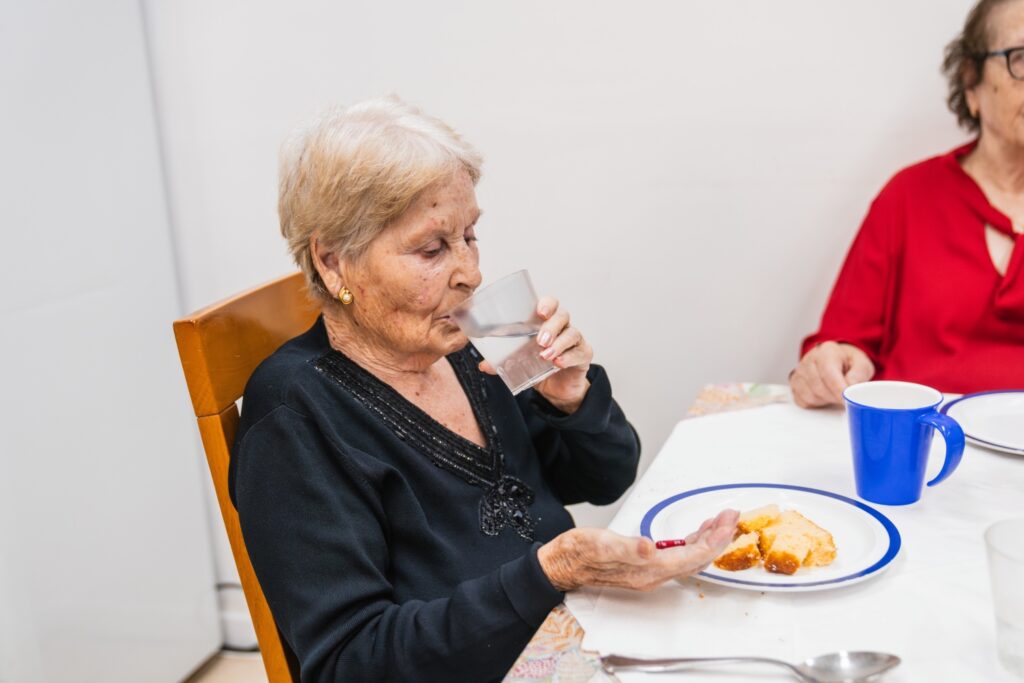This post is the third in a series of three centering obesity as a health equity issue for older adults. ASA published a series of fact sheets to inform and educate the aging services network on prioritizing obesity care for older adults, which were distributed to congressional offices during ASA’s Hill Day on April 3, 2025, in Washington, DC, to advocate for the health and well-being of older Americans, including ensuring greater access and options to the full continuum of obesity care and treatment for older adults.
The Treat and Reduce Obesity Act (TROA) was recently reintroduced in the U.S. Senate, with reintroduction in the U.S. House of Representatives expected soon. First introduced in 2013, in the 113th Congress, TROA is a bipartisan bill aimed at improving Medicare coverage for obesity treatment, including intensive behavioral therapy and FDA-approved medications. The bill has been reintroduced in each subsequent Congress but has yet to pass.
TROA is a crucial piece of legislation that could significantly impact the health and well-being of older adults. Obesity, an increasingly prevalent chronic condition among elders, is closely tied to a variety of health issues, including diabetes, heart disease, arthritis, cancer, dementia and disability. These health conditions not only reduce quality of life but also increase healthcare costs and reliance upon social services. Given these realities, TROA offers a vital opportunity to advance the goals of aging advocacy by providing a potential path to help older adults live healthier, more independent lives.
To communicate the importance of TROA for older adults, it’s essential to connect the treatment and prevention of obesity with broader aging advocacy goals, such as promoting health equity, autonomy, access to care, and social inclusion. For aging services providers, TROA offers a strategic opportunity to engage policymakers and funders to secure resources and drive systemic changes in addressing obesity among older adults.
The Role of TROA in Advocating for Healthy Aging
1. Addressing the Health Burden of Obesity in Older Adults
Obesity in older adults is a complex issue, often resulting in diminished quality of life, increased comorbidities, and a higher risk of functional decline. Studies show that older adults with obesity are more likely to experience chronic pain, decreased mobility, and disability, which can make it difficult to maintain independence and engage in community activities.
TROA aims to provide comprehensive treatment options, including medication coverage, intensive behavioral therapy, and bariatric surgery, as well as improving access to preventive services. For older adults, who often face significant barriers to accessing care due to limited financial resources, geographic isolation, or age-related discrimination, this act could provide essential services that might otherwise be inaccessible.
Aging services providers can position TROA as a necessary intervention that allows older adults to improve their mobility, functionality and mental health—all critical components for maintaining independence and aging in place.
2. Enhancing Health Equity Through Expanded Access to Care
The health disparities older adults face often are compounded by socioeconomic status, race and geographic location. Obesity disproportionately affects low-income communities, racial and ethnic minorities, and those living in rural areas, where access to healthy foods, physical activity opportunities, and healthcare services may be limited.
TROA aligns directly with health-equity goals by expanding access to obesity treatment for vulnerable populations, including older adults. The act improves Medicare coverage for obesity treatments and encourages the inclusion of evidence-based weight loss interventions, which older adults often under use. By reducing financial barriers to treatment, TROA helps level the playing field, ensuring that older adults from marginalized and underserved backgrounds are not left behind.
3. Prevention and Early Intervention for Healthy Aging
A key component of aging advocacy is shifting the focus from reactive care to preventive care, particularly as it relates to chronic diseases. Preventing obesity-related conditions such as diabetes and hypertension is not only critical for individual health but also for reducing the long-term costs of care. As older adults experience these conditions at higher rates than younger populations, addressing obesity through early intervention and prevention can significantly reduce the burden of chronic diseases in the older adult population.
Through TROA, aging services providers can advocate for community-based obesity prevention programs, such as nutrition education, physical activity initiatives, and health screenings. These programs, when implemented, can empower older adults to take charge of their health, potentially reducing the onset of obesity-related diseases and improving overall quality of life.
4. Supporting Independence and Social Engagement
Obesity can have profound effects on an older adult’s ability to engage with their community and maintain social ties, which is essential for mental health and emotional well-being. Many older adults living with obesity face mobility limitations, making it harder to participate in social activities or access community resources like senior centers, volunteer opportunities, and healthcare services.
By supporting access to treatments that can improve mobility and reduce chronic pain, TROA helps older adults stay connected to their communities and maintain social engagement, both of which are critical to reducing social isolation and depression. As aging services providers work with policymakers and funders, highlighting these social inclusion benefits can be a compelling argument for investing in obesity-related interventions.
TROA: a Critical Lens Via Which Aging Services Can Engage Policymakers and Funders
1. Advancing a Health Equity Agenda
For policymakers and funders, health equity is becoming a key priority, especially as the country grapples with the challenges of an older population. TROA directly contributes to advancing health-equity goals by ensuring that older adults, especially those from marginalized and underserved communities, have equal access to the treatments and services they need to address obesity.
Engaging with data on health disparities related to obesity and aging—such as the disproportionate burden of obesity among minorities and low-income elders—helps provide a strong foundation for advocating for TROA funding. The act’s ability to address underlying social determinants of health, such as access to quality healthcare and nutritious food, makes it an invaluable tool for those advocating for systemic change in aging policies.
2. Reducing Healthcare Costs and Improving Long-Term Outcomes
The financial burden of obesity-related diseases on individuals and healthcare systems is staggering. Older adults with obesity typically incur higher healthcare costs due to frequent hospitalizations, extended treatment for chronic conditions, and long-term care needs. By expanding access to obesity treatments, TROA can help reduce the overall healthcare costs associated with aging, which is an appealing argument for policymakers and funders looking to curb spending while improving outcomes for older populations.
Furthermore, cost-effective treatments such as intensive behavioral therapy and anti-obesity medications funded through Medicare could potentially improve long-term health outcomes, reducing the need for more expensive interventions down the road. Aging services providers can leverage this economic argument when engaging stakeholders, highlighting both the human and fiscal benefits of obesity treatment programs.
3. Creating Holistic, Person-Centered Care Models
TROA also is an opportunity to push for a holistic, person-centered approach to aging. By integrating obesity treatment into the broader context of aging services, such as home care, community-based services, and mental health support, aging services providers can advocate for a more coordinated and comprehensive model of care that prioritizes the health and well-being of older adults across multiple domains.
Policymakers and funders are increasingly focused on interdisciplinary care models that break down silos and address the whole person. By framing obesity as a crucial part of overall healthy aging, providers can encourage a more integrated approach to care, where obesity treatment is seen as an essential part of the aging process, not just a standalone issue.
Conclusion
The Treat and Reduce Obesity Act is an essential tool in the fight against the obesity epidemic among older adults. For aging services providers, it provides an opportunity to advocate for health equity, improved access to care, and better health outcomes for older adults. By framing obesity as a central issue in aging advocacy, TROA aligns with broader goals of promoting social inclusion, independence and quality of life for older adults.
Engaging policymakers and funders via a strong health equity lens helps underscore the multifaceted benefits of TROA, not just for individuals but also for communities and healthcare systems at large. By leveraging data, personal storiess and economic arguments, aging services providers can make a compelling case for why TROA is not just a healthcare issue—it’s a matter of justice and dignity for older adults across the country.
Patrice Dickerson, PhD, is ASA’s Senior Equity Strategy Director.
Photo credit: Shutterstock/Aleksandra Suzi













